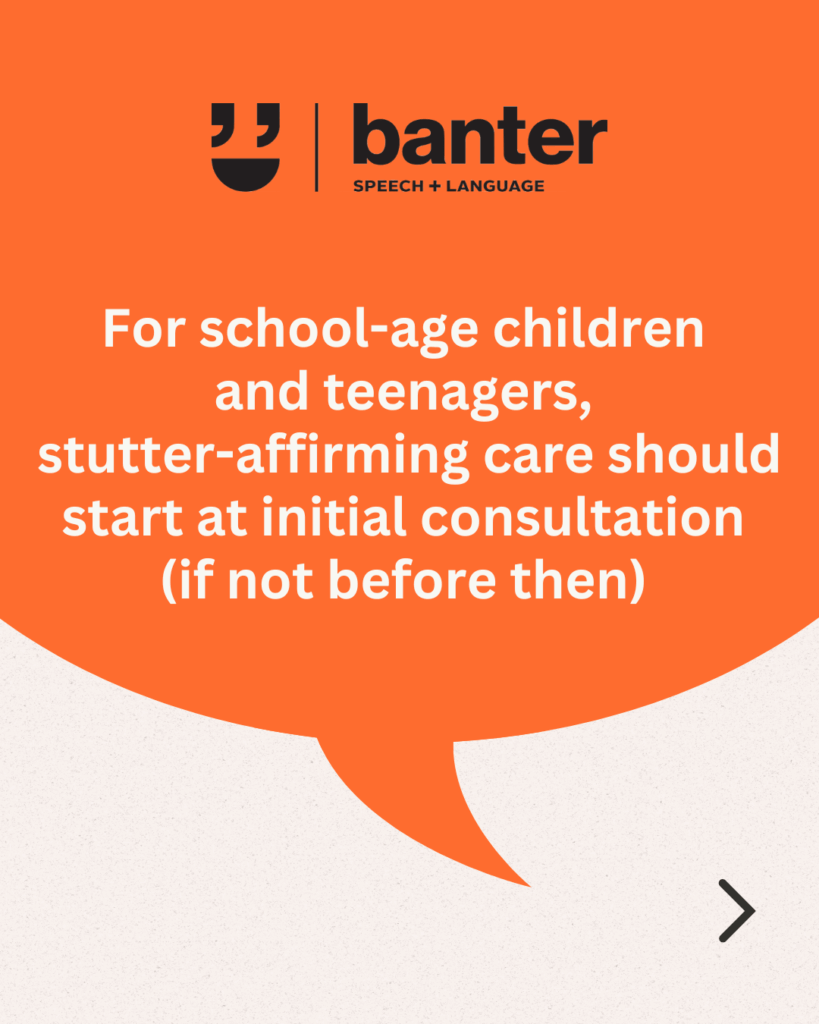For school-age children & teenagers, stutter-affirming care should start at initial consultation (if not before then)
The big picture:
Stuttering support for school-age students isn’t just about speech. It’s about helping students to avoid applying society’s negative stereotypes, prejudices and discrimination about stuttering to themselves – a risk known as “stuttering self-stigma”.
Why it matters:
- Children as young as 10 years may start to apply stuttering stigma to themselves. This risk increases in teenage years as students compare themselves with their peers and continue to develop self-identities.
- For adults, greater self-stigma is linked to poorer health outcomes, lower self-esteem, self-efficacy, and quality of life; and higher levels of anxiety and depression.
What might reduce self-stigma risks?
- Stutter-affirming therapy that fosters positive stuttering identities by:
- reducing negative reactions to stuttering;
- valuing stuttering as common, normal and natural; and
- creating environments in which it is easier to stutter, including through education, encouragement, and advocacy.
- Opportunities to meet and befriend other people who stutter, including through group-based therapy, stuttering support groups, and stuttering-focused summer camps.
- Cognitive therapies specifically designed to reduce social anxiety for teenagers who stutter.
Where can I find out more?
- Fostering Positive Stuttering Identities Using Stutter-Affirming Therapy, by Assistant Professor Christopher Constantino.
- Evaluating Stuttering Self-Stigma and Its Relationship to Adverse Impact in Children and Adolescents With the Child Stuttering Self-Stigma Scale by Dr Chelsea Johnson and colleagues.
- Camp SAY: Australia – information about summer camps for 7-18 year olds
- iBroadway: information about Online Social Anxiety Program for Teens who Stutter
When should stutter-affirming care start?
At first contact: the very first time you speak or meet with the child and their family.
Tool to try:
Incorporating feedback from school-age clients who stutter, we’re happy to release our stutter-affirming initial consultation pack designed to support other SLPs to deliver stutter-affirming care to school-age children and teenagers from the get-go.
It includes:
- a conversation scaffold to get to know the whole client, including strengths, interests, and goals, based on the F-Word Framework (aligned with the ICF);
- explicit recognition of stuttering as normal and natural;
- an open discussion of some of the real world barriers experienced by school-age children who stutter, why discrimination is unacceptable, and why avoidance and concealment strategies aren’t the long-term answer;
- optional, untimed functional speech tasks – a stutter-counter free zone! – including reading, story-retelling, verbal problem solving, and dual motor tasks designed to emulate real world speaking demands, as well as an observation recording sheet;
- a stuttering and fluency wellness snapshot for clients to self-report how they feel about their speech over time; and
- lots of opportunities to ask and answer questions about stuttering.
Check it out:

















